
The Noctua NH-L12Sx77 is a revised and slightly larger version of the already established NH-L12S. However, it is not a replacement, as the installation height increases to 77 mm. This is still a relatively low height, but the practical compatibility must still be balanced with the case size. Top-flow coolers are always flatter than tower coolers. In the Noctua NH-L12Sx77 test, we take a look at this enlarged new edition of the low-profile cooler.
Specifications
| Socket compatibility Intel | LGA 1851, 1700, 1200, 115x |
| Socket compatibility AMD | AM4, AM5 |
| Mounting | SecuFirm2 (compatible with other SecuFirm models with 78 mm mounting distance) |
| Dimensions | 77 x 128 x 131 mm (77 mm installation height) |
| Weight | 410 g without fan / 540 g with fan |
| Material | Copper & aluminum, nickel-plated |
| Fan | Noctua NF-A12x15 PWM (450 – 1850 RPM) |
| Warranty period | 6 years |
| Price | € 84.90 * |
A short analysis of the name of the Noctua NH-L12Sx77 in advance. NH will stand for Noctua Heatsink. The L stands for Low Profile and the 12 for the 120 mm fan. The S is more difficult to assign. It could mean “successor”, as the original Noctua NH-L12S is advertised as a “successor to the award-winning NH-L12”. The x77 describes the height in millimeters. This type of naming is already used for fans. For example, the Noctua NF-A12x25 is available as a 25 mm high fan and the Noctua NF-A12x15 as a 15 mm high fan, whereby the latter is used in this CPU cooler.
A note: There is often little space in small housings. Even the small 7 mm additional height compared to the NH-L12S means that the cooler is no longer compatible with some very compact housings. However, the cooler is a good fit for systems in 3U 19″ rack cases, for example, or for older cases that do not offer space for 120 mm tower coolers.
Packaging and scope of delivery
- No plastic used as far as possible
- Mounting material for all current mainstream bases included in the scope of delivery
- Mounting material for older or future bases available free of charge or at low cost
The packaging of the Noctua NH-L12Sx77 is kept in the brand’s typical style with a mixture of brown and white. The most relevant features are summarized on the front and top. Some of the features are explained in more detail on one of the sides. The other side summarizes the specifications in tabular form and on the back there is a multilingual product description.
Also typical for Noctua, the packaging largely dispenses with plastic and the cooler is protected by a cleverly folded cardboard construction, which is hidden under the accessory box. Despite the identical packaging size and very comparable design of the cooler, the folding pattern differs significantly from the lower Noctua NH-L12S. After pulling a somewhat stubborn insertion tab, the box is slowly “rolled up”. Finally, the screw heads are pulled out for assembly and the cooler is exposed. Plastic, but not much, is then found to cover the contact surface.
Apart from the heat sink, the accessory box contains mounting materials for the AMD AM4 and AM5 sockets as well as for various Intel sockets. The box also contains the typical Noctua screwdriver with cross recess, a low-noise adapter, the metal Noctua badge to stick on the case and of course the thermal paste, which at the time of testing was NT-H2. Experience has shown that Noctua adapts the mounting material as soon as new sockets appear on the market. If you need the mounting material for older sockets or future sockets, Noctua offers a free mounting kit for owners of the invoice for the cooler. If you no longer have the invoice, the kit costs a little, but is still many times cheaper than a new cooler. You will need a kit with a mounting distance of 78 mm.
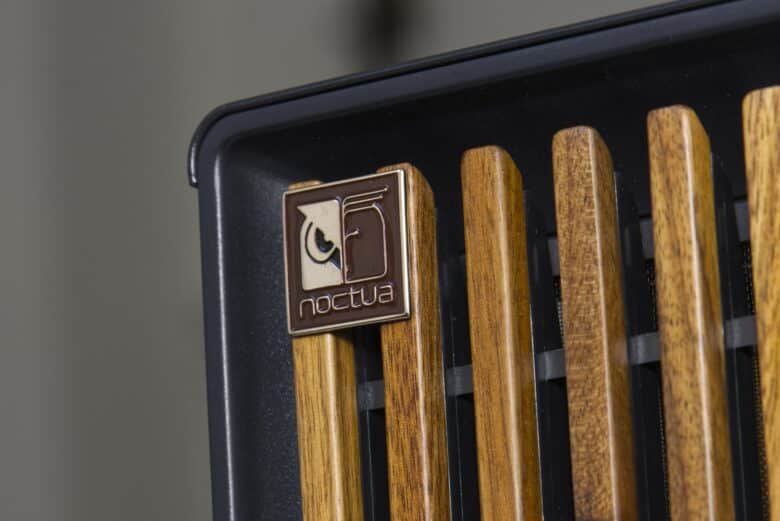
Design
- Classic Noctua color scheme with nickel heatsink and brown fans
- Top-down design
- The fan is mounted under the fins at the factory
- Comparison with lower NH-L12S
The Noctua NH-L12Sx77 is not designed as a tower cooler to reduce its size, but as a top-down fan. However, the design here is also different to most top-down models, as the heat sink does not sit directly on the support surface. Instead, heat pipes – this model has a total of six compared to the four on the lower NH-L12S – guide the heat to the fins. The fan sits below the fins ex works and guides the air upwards from below. Alternatively, the fan can also be mounted above the fins in a classic top-down position, but this increases the height of the cooler from 77 mm to 92 mm.
The low-profile design is particularly interesting for installation in small cases, such as ITX systems, but older cases with a narrow width or cases for 19″ racks, such as for servers, often have very limited space for heat sinks. The direction of the airflow also cools the voltage converters better than tower coolers, which draw the air past above them.
Typical for Noctua, the heat sink is nickel-plated and the fan comes in the characteristic brown-beige look. This design may divide opinion, but Noctua often launches a black chromax.black version on the market after some time. At the time of testing, however, this does not exist for either the Noctua NH-L12Sx77 or the lower NH-L12S, which was released in 2017.
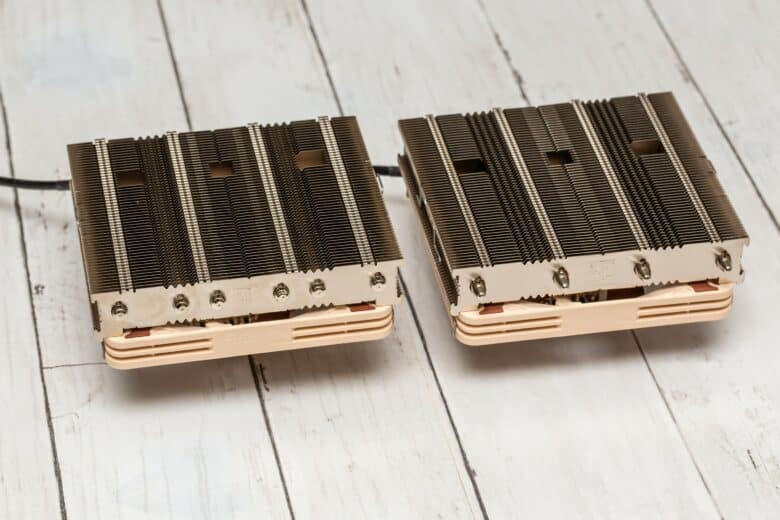
Apart from the number of heatpipes, the design has also changed. The ends on the side of the fins are shorter and make a more professional, uniform impression. They simply look like a more solid finish.
Workmanship
- High-quality, robust workmanship
- NF-A12x15 fan is more similar to the NF-A14 than the NF-A12x25
This brings us directly to the build quality of the Noctua NH-L12Sx77. As you would expect from Noctua, the heat sink makes a very high-quality impression. The two additional heatpipes ensure better flexural strength compared to the older model. The fins have a decent thickness and are therefore also hard and remain in position. Nevertheless, the weight has only increased by 20 g compared to the smaller model – practically imperceptible.
As far as the fan is concerned, the Noctua NF-A12x15 is the slimmer version of the popular premium fan. Due to the lower maximum speed and reduced thickness, this fan naturally does not quite deliver the performance of its big brother, but the build quality is still top notch. The frame is torsionally rigid despite the slim design. The shape of the fan blades is more reminiscent of the Noctua NF-A14 than the more similarly named Noctua NF-A12x25, whose fan blades are more tapered, and the material used for the NF-A12x15 is not liquid crystal polymer, but more classic plastic. However, this still makes a high-quality impression and the build quality leaves nothing to be desired. You can see that the same fan has not simply been made narrower, but that each thickness has been developed separately.
Mounting the Noctua NH-L12Sx77
- Well-known SecuFirm2 system
- Many placement options, especially for AMD
- Depending on space requirements, the cooler can be mounted on both sockets in any direction of rotation
As with almost all Noctua coolers, the NH-L12Sx77 uses the SecuFirm2 mounting system. This is the standard that many other manufacturers have now followed, as it is easy to use and works well. The instructions supplied are very good and precise, so it is not difficult to follow them. If you need the instructions in a language other than the English version supplied, you can also find them in other languages directly on the Noctua website.
Mounting on Intel sockets
On Intel sockets, the supplied metal backplate is used and, depending on the hole spacing, the screws are pushed through from behind and secured with clips. On the other side of the mainboard, spacers are attached – depending on the socket, there are different models in blue or black.
The mounting bridges, also known as brackets, are now fitted and tightened onto the screws using the knurled nuts.
Due to the square arrangement of the holes on Intel sockets, you can freely decide how you want to rotate the cooler so that it does not collide with the RAM or components on the mainboard, such as voltage converter coolers.
Mounting on AMD sockets
Mounting on AMD sockets is more complex. Here you use the original AMD backplate and only have to unscrew the original plastic clips, if still present. Now you have to hold the backplate from behind and insert screws through the brackets and spacers from the front to screw them to the backplate. This works best if the mainboard is lying on the table so that the backplate does not slip out and you can place the individual parts from the front.
There are not two brackets here, but four. Due to the rectangular placement of the holes, you have to choose one of the pairs depending on the desired rotation of the radiator. Either the long ones for the regular position or the short ones for a 90° rotation. The AMD brackets also have two holes each. One for central mounting and one for offset mounting, as the greatest heat development in current-generation AMD processors does not take place in the middle of the processor, but offset downwards.
Finally, the thermal paste is applied in both cases and the heat sink is screwed on, with holes in the fins above the corresponding screws providing the space to get at it with a screwdriver. In contrast to many other cooler concepts, it is not actually necessary to remove the fan in this case. You can simply turn the fan blades to get through with the screwdriver.
Mounting the fan on the Noctua NH-L12Sx77
- Fan mounted under the fins at the factory for the lowest possible height
- The fan can be moved to the top side as required and space permits
- The shape of the clips enables the attachment of a removable fan in standard thickness
The Noctua NH-L12Sx77 is factory-fitted with a narrow 120 mm fan on the underside of the fins. This provides an almost identical distance to the RAM as the lower NH-L12S with a fan mounted above. Depending on the space in the housing, the fan of the Noctua NH-L12Sx77 can of course also be moved to the top. This increases the cooler from 77 mm to 92 mm. It is also possible to rotate the fan, for example to draw the air from above in pull configuration instead of pushing it upwards. However, this position is not recommended, as it leads to a higher noise level if the fan blades pass directly by the fins without the clearance provided by the bars on the underside of the fan.
If you look at the clips for mounting the fan, you will also notice that they are designed in several stages. This makes it possible to replace the fan with a full 25 mm thick model. This can be interesting, for example, if you move the system to a larger case and now have more space for the cooler. Or if you are moving the cooler after a system upgrade. You can also further increase the performance of the cooler with a high-end air cooler fan, such as the Noctua NF-A12x25.

A really amazingly simple solution, made possible by the well thought-out design of the fan clips! However, this increases the cooler from the factory-set 77 mm to a total of 102 mm. You can hardly call it low profile now.
Noctua NH-L12Sx77 performance test
- Comparison with the lower Noctua NH-L12S and the AMD Wraith Spire
- Test of a mid-range CPU
For the performance comparison of the Noctua NH-L12Sx77, two other coolers were compared: The older NH-L12S and the AMD Wraith Spire, a low factory cooler from AMD. The AMD Ryzen 5 3600X was used as the heat source. This is a typical representative of the mid-range performance class and can be a hothead despite its humane power consumption of around 80 watts under Allcore Cinebench load. The test is carried out under this load and a one-minute measurement is started after six minutes.
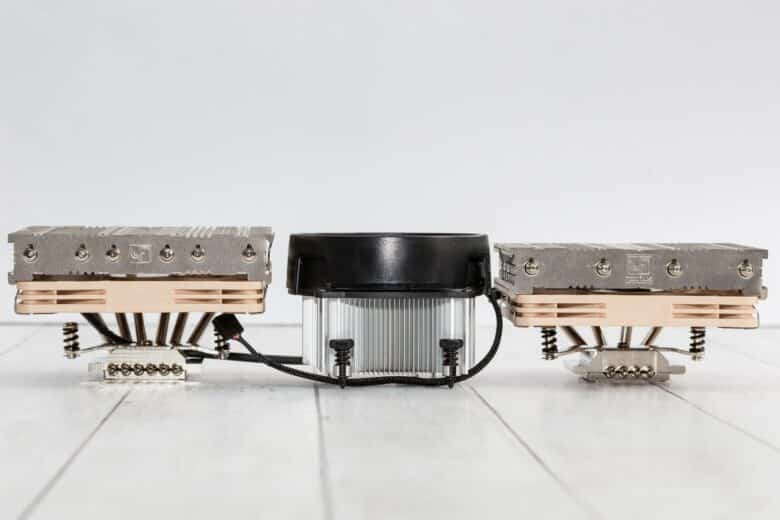
Aside from the factory performance with the fan mounted below the heatsink, I also ran a test with the fan mounted above and the alternative fan upgrade to the Noctua NF-A12x25.
The measurement results are given as a delta, i.e. the distance to the room temperature. This allows temperature fluctuations in the room to be taken into account. So if the measurement result is 40 Kelvin, the room temperature must be added. If the room temperature is 21°C, the practical processor temperature is 61°C. The case fans were set to a low speed to ensure a supply of fresh air, but not to actively influence the result. All automatic functions were also switched off.
Noctua NH-L12Sx77 test – measurement results
| Cooler | Temperature measurement |
| Noctua NH-L12Sx77 (fan below): 50% PWM | 53,2 |
| Noctua NH-L12Sx77 (bottom fan): 100% PWM | 51,1 |
| Noctua NH-L12Sx77 (top fan): 50% PWM | 53,1 |
| Noctua NH-L12Sx77 (top fan): 100% PWM | 52 |
| Noctua NH-L12Sx77 (NF-A12x25): 50% PWM | 52,6 |
| Noctua NH-L12Sx77 (NF-A12x25): 100% PWM | 50 |
| Noctua NH-L12S (bottom fan): 50% PWM | 53,9 |
| Noctua NH-L12S (bottom fan): 100% PWM | 51,8 |
| Noctua NH-L12S (top fan): 50% PWM | 53,2 |
| Noctua NH-L12S (top fan): 100% PWM | 52,5 |
| AMD Wraith Spire: 50% PWM | 58,2 |
| AMD Wraith Spire: 100% PWM | 56,1 |
Roughly speaking, there are no real surprises. The Noctua NH-L12Sx77 is more powerful than the NH-L12S and the AMD Wraith Spire. It is particularly interesting to note that although the difference in fan placement makes a measurable difference, it is actually always stronger from below at 100% PWM. At 50% PWM, it can be observed that the NH-L12Sx77 is better at getting fresh air than the flatter NH-L12S. Here the difference in performance is greater between 50% and 100% power. Mounted at the top, the Noctua coolers are more powerful at 50% than mounted at the bottom, but the differences are not really that great. Both outperform the AMD Wraith Spire by a comfortable margin.
The larger Noctua NF-A12x25 provides a certain amount of additional performance, but only really benefits at the upper end of the performance range. In terms of volume, it doesn’t make any noticeable difference – neither at 50% nor at 100% PWM. At full power, it flexes its muscles and takes the lead.

In terms of volume, the two Noctua coolers have nothing in common. This is not surprising, as both are supplied with the same Noctua NF-A12x15 PWM. At 50% power, which corresponds to just over 1000 RPM, both are almost inaudible. In contrast, the AMD Wraith Spire is already louder at 50% than the Noctua cooler at 100% power. Although these are audible at full speed, they are still quite pleasant. If the fan is mounted at the bottom, the performance is surprisingly strong in the high speed range, but the fan noise is noticeably sharper than when the fan is mounted on top of the cooler.
Conclusion
The Noctua NH-L12Sx77 is a very decent cooler. In addition to the high-quality workmanship and the well thought-out little details, such as the multi-stage fan bracket, which increases flexibility of use, the Noctua NH-L12Sx77 is really quite powerful and quiet even as it is. However, with the lowest height of 77 mm, it is already too high for some systems and even compact cases nowadays offer the option of installing larger coolers. The Noctua NH-L12Sx77 therefore fills a very specific niche, which includes micro-towers (smaller mATX cases, such as the Inter-Tech MC-02 Micro, in which tower coolers cannot really be used) and some mini-ITX cases, such as the Fractal Design Terra. However, really compact ITX cases will require even flatter coolers.
Of course, the Noctua NH-L12Sx77 is not a truly universal cooler, but if you are planning to use certain special formats or want to continue using old cases, it can certainly play to its strengths and offers Noctua quality and longevity. Where it fits, it is definitely preferable to the smaller Noctua NH-L12S. But where it doesn’t fit, you don’t have to worry about the little brother either: The difference in performance is measurable, but in most cases will not be relevant to everyday use. And although the price is relatively high, the expected longevity, socket flexibility thanks to socket upgrade kits and good workmanship put this into perspective somewhat.

Noctua NH-L12Sx77
Design
Workmanship
Mounting
Performance & Noise level
Value for money
93/100
The Noctua NH-L12Sx77 is a quiet, effective cooler that masters the balancing act between low profile and large top-down coolers.


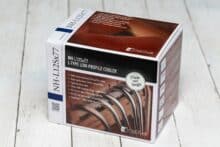
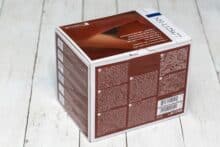

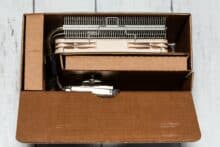

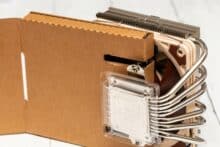

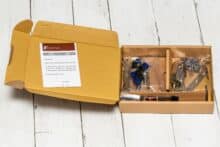
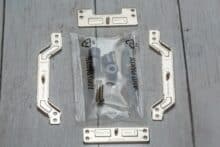

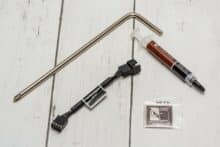
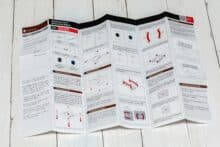
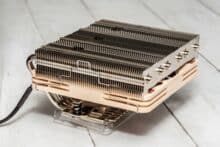
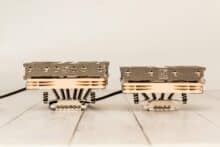
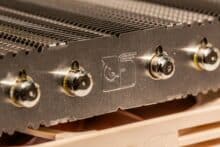
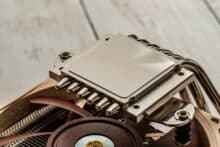
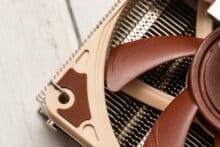
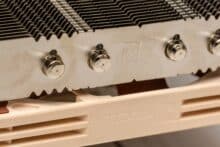
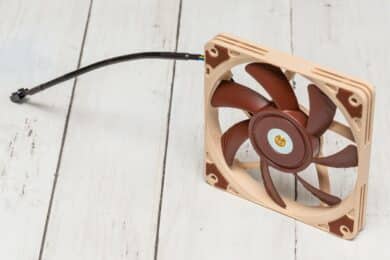

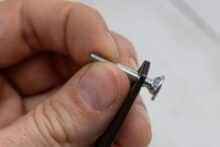
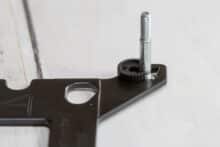

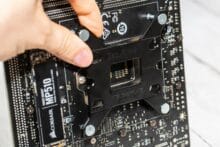
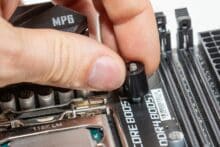
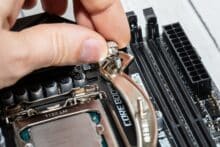

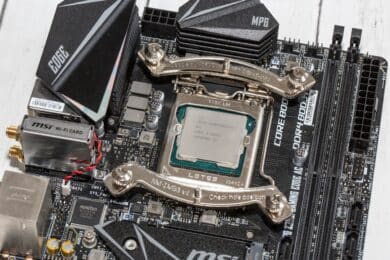

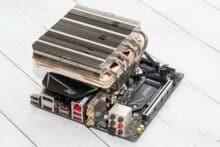
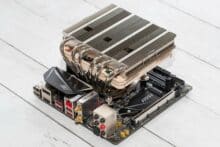
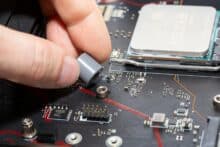

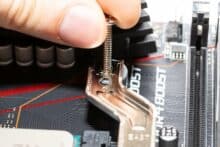

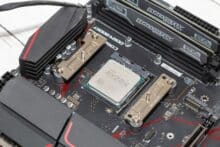
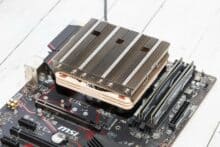
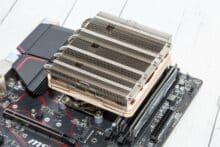
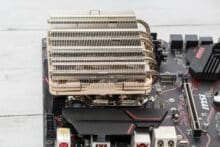
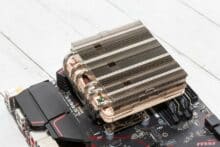
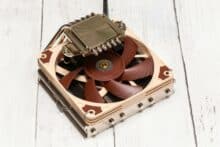
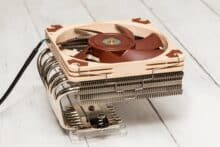
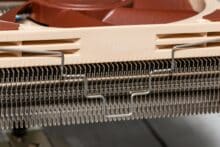
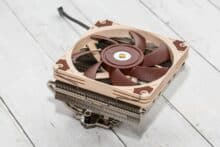
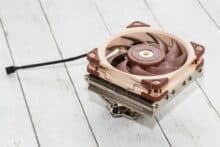
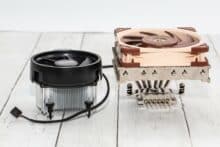
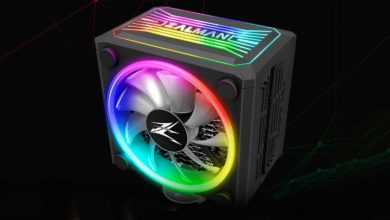
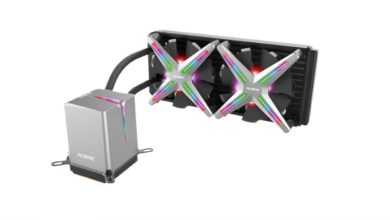
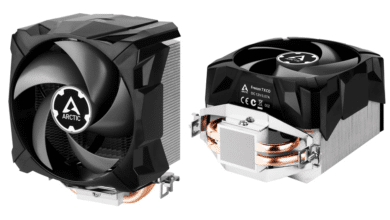

No replies yet
Neue Antworten laden...
Gehört zum Inventar
Beteilige dich an der Diskussion in der Basic Tutorials Community →